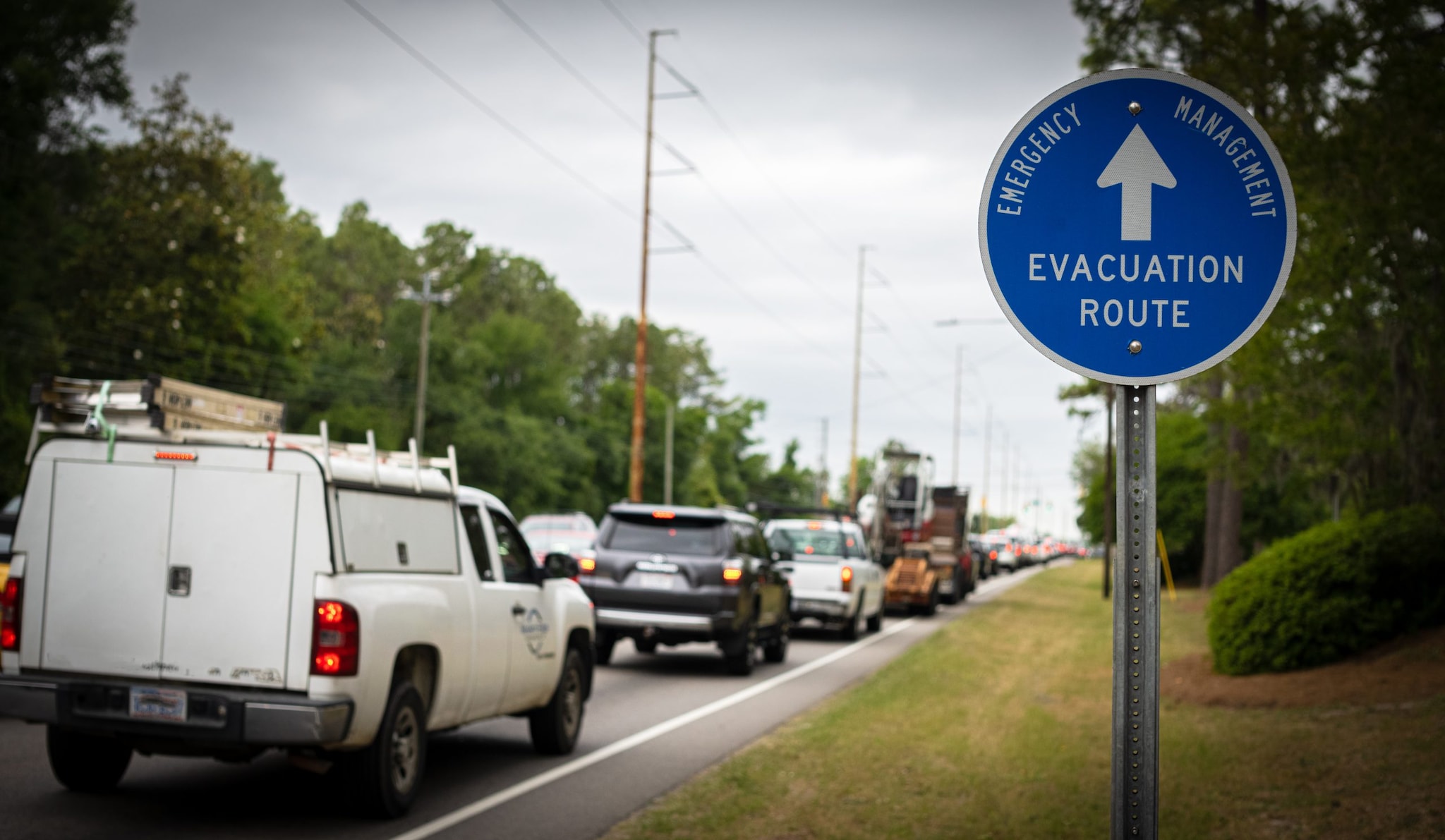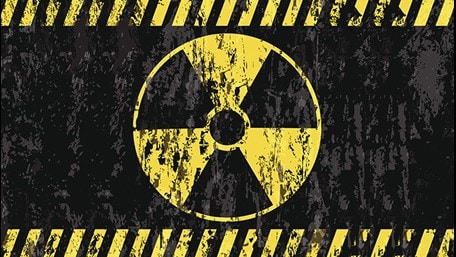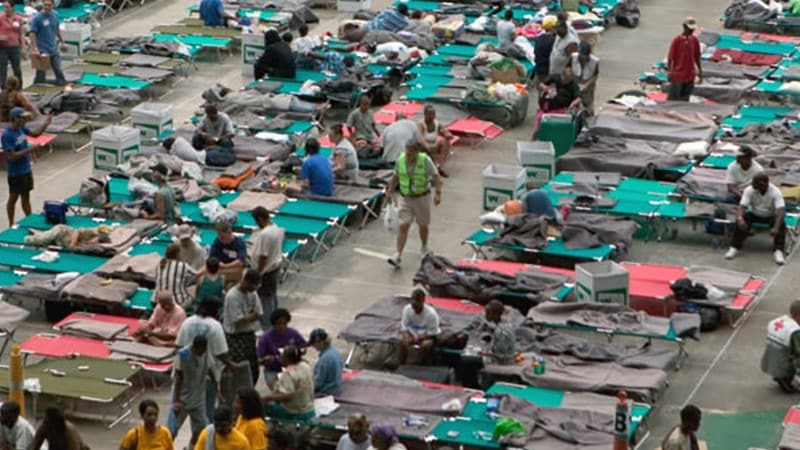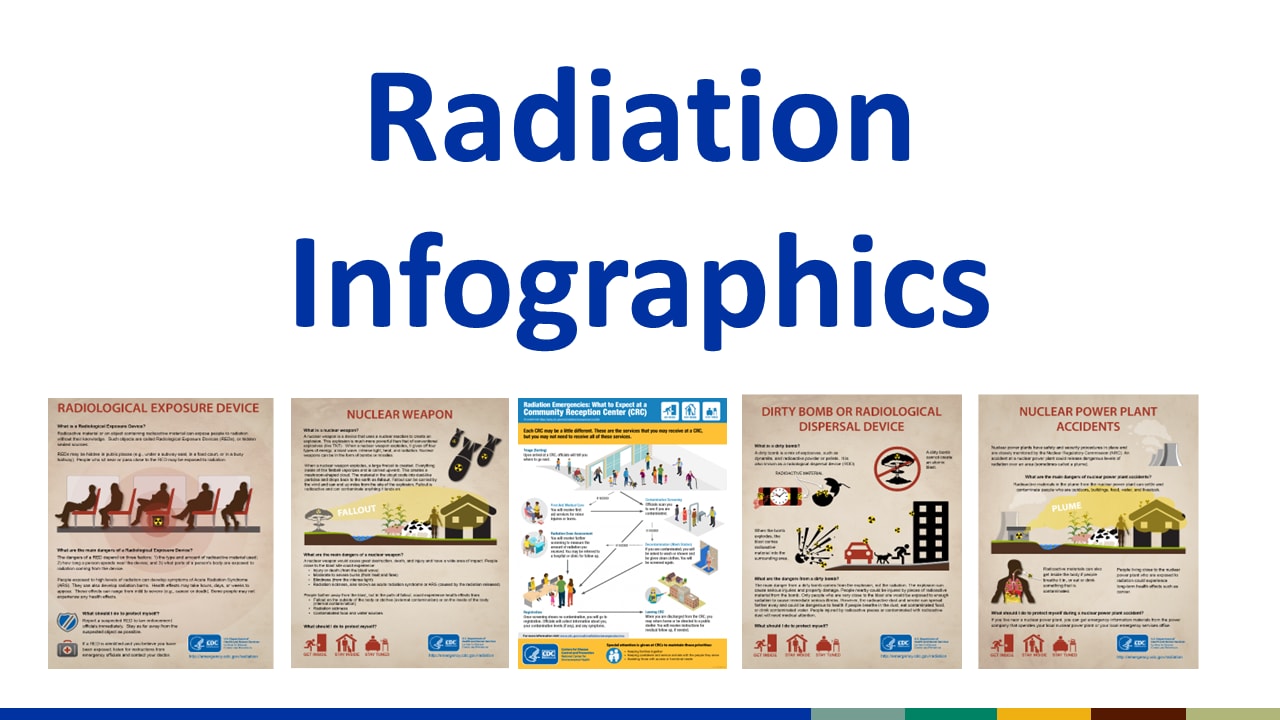At a glance
- In a radiation emergency, stay tuned for directions from emergency officials about shelter locations and safest travel routes.
- Bring any medicines and prescriptions you are taking, important papers, and a change of clothes.
- If you have pets, bring a cage, leash, food, medication, and veterinary records.
- Shelters will provide food, water, medicine, and basic sanitation.
- Do not return home before emergency officials say it is safe.

Locating family and friends
Normal lines of communication may not work. Depending on the size and scope of the radiation emergency, it may be difficult to complete a phone call. Try to use text messages (SMS) if possible. Learn about other ways to stay tuned.
The American Red Cross can help you locate or connect with a loved one or friend who has been impacted by a current disaster event.
Visit CDC's Prepare Your Health website for more information on staying connected family or friends after a disaster.
When to evacuate
Each situation will be different. Emergency officials consider many factors to make sure that it is safe to evacuate. Evacuation decisions will be based on
- Wind speed and direction
- The size and extent of the disaster
- The radiation levels
- Whether or not roads and structures are damaged
Act quickly and follow instructions. Each situation will be different, and emergency officials will give you the best information to protect yourself and your loved ones.
If you have time before you leave your house, close and lock all windows and doors and turn off the
- Air conditioner
- Heater
- Ventilation system
If evacuating by car, keep the windows closed and the ventilation system turned off.
Local emergency officials have plans to help those who do not have access to transportation. Transportation will be provided to evacuate people from dangerous areas.
Evacuating with pets
Listen for instructions and information on pet evacuation and the location of available pet shelters.
Pets will not be allowed into any shelter until they have been washed to remove radioactive material. Get more instructions on washing pets.
Remember to bring
- A cage
- A leash
- Food
- Medication
- Veterinary records, including immunization records
Information on shelters
Shelters will be available for people who have been instructed to evacuate. Local authorities will tell you
- When to go to an emergency shelter
- Where the shelter is located
- The safest path for travel
Shelters will be located away from areas with high levels of radiation.
The shelter will provide
- Water
- Food
- Medicine
- Basic sanitary facilities
You should bring
- Any medicines and prescriptions that you are taking
- Important papers
- A change of clothes
Emergency coordinators will tell you about any other supplies you should bring with you.
Returning home after an evacuation
Do not return until you are told it is safe to do so by authorities. Attempting to return before it is safe puts you and your family in danger. It also keeps emergency responders from doing their jobs safely.
Radiation experts and emergency officials will determine the location and amount of radioactive contamination.
Responders will take air, soil, food, and water samples in the affected area to find areas with dangerous levels of radiation. Unsafe areas will be closed to non-emergency responders.
A cleanup plan will be developed and will include input from:
- The community
- Radiation experts
- Emergency officials
Emergency officials will provide updates on the cleanup efforts as they become available.




